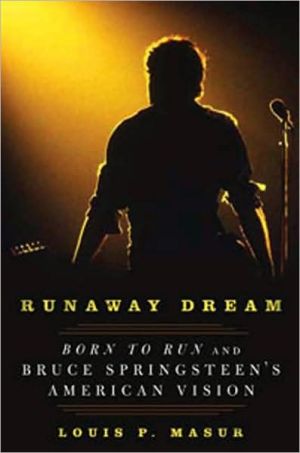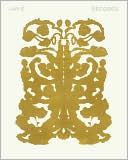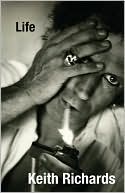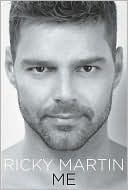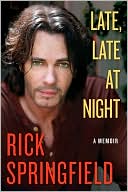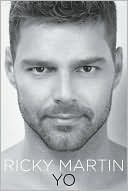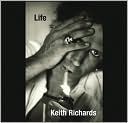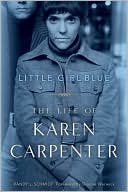Runaway Dream: Born to Run and Bruce Springsteen's American Vision
To Millions of Listeners, Born to Run is much more than a rock 'n' roll record-it's a shout from the street, an utterly unique work of art that joined Springsteen with other American troubadours such as Whitman and Steinbeck. The album made Springsteen a megastar, and confirmed him as the rocker who, more than any other, gives voice to our hopes, fears, and aspirations. Runaway Dream chronicles the making and significance of Springsteen's masterwork, deftly sketching the ambition, history,...
Search in google:
To Millions of Listeners, Born to Run is much more than a rock 'n' roll record-it's a shout from the street, an utterly unique work of art that joined Springsteen with other American troubadours such as Whitman and Steinbeck. The album made Springsteen a megastar, and confirmed him as the rocker who, more than any other, gives voice to our hopes, fears, and aspirations. Runaway Dream chronicles the making and significance of Springsteen's masterwork, deftly sketching the ambition, history, and personalities that created an enduring piece of Americana. The Barnes & Noble Review In May 1974, Jon Landau saw a little-known band open for Bonnie Raitt in Harvard Square, then went home and penned perhaps the most famous line in all of pop music criticism: "I saw rock and roll's future and its name is Bruce Springsteen." That's as gutsy as reviewing gets: personal, uncompromising -- and also pretty wide of the mark. The future of rock and roll was punk and heavy metal, followed by indie rock and its offshoots. Springsteen, who turns 60 in a few weeks, is an incredible talent, and 35 years ago he had a great career ahead of him. But his music, his lyrics, and his public persona have always had much less to do with the future than with the past.
Setting Up 1Sound Check: "The Screen Door Slams" 61 Before Born To Run 172 The Making Of Born To Run 403 The Songs Of Born To Run 644 The Geography of Born To Run 975 The Reception of Born To Run 1196 Born To Run Thirty Years On 147Encore: "What Else Can We Do Now?" 184A Q&A With Greil Marcus 201Acknowledgments 209Notes 213Selected Bibliography 239Lyric Credits 241Index 243
\ Publishers WeeklyNearly 35 years on, Bruce Springsteen's album Born to Run shows little sign of flagging popularity; National Public Radio has hailed the 1975 album, a poetic explosion of frustration and freedom, among the 100 most important musical works of the 20th century, and it has made it into the Library of Congress' National Recording Registry. Though he admits that he wants the album played at his funeral, author and American studies professor Masur (The Soiling of Old Glory) remains surprisingly objective while examining the iconic album and its effect on the New Jersey troubadour and American culture at large. Only one chapter is dedicated to the actual making of Born to Run; the rest details Springsteen's career before and after its release, critical reaction, and the album's long-smoldering influence. Although Springsteen was not interviewed, E Street Band bassist Garry Tallent provides insight into recording sessions, and Masur quotes extensively from published sources and Springsteen's own in-concert patter. Masur's knowledge runs deep, and his work often reads like a lengthy dissertation on the Boss's lyrics, key progressions, imagery and themes; Bruce's many hard-core fans will find this an immersive, thoughtful treat. \ Copyright © Reed Business Information, a division of Reed Elsevier Inc. All rights reserved.\ \ \ \ \ Library JournalMasur (1831: Year of Eclipse; Autumn Glory: Baseball's First World Series) has written what is essentially the biography of a classic American rock album. In 1975, Bruce Springsteen released Born To Run, a collection of songs articulating the desire to escape, the promise and sometimes futility of personal dreams, and, ultimately, the search for connection and love. After briefly examining Springsteen's early life and work, Masur details the painstaking making of the album, analyzes each song's lyrics and musicality, discusses the album's reception and what he refers to as its spatial and temporal "geography," and relates its impact and continued resonance. Masur includes quotes from published interviews and articles from critics, musicians, and Springsteen himself, who eloquently reflects on his art and vision and the album that defined themes he continues to explore. VERDICT Springsteen fans and rock devotees generally will want to read this well-thought-out book. While not a lot of new information is presented, the synthesis of history and analysis of a specific album is different from the many works published about Springsteen.—Jim Collins, Morristown & Morris Twp. Lib., NJ\ \ \ The Barnes & Noble ReviewIn May 1974, Jon Landau saw a little-known band open for Bonnie Raitt in Harvard Square, then went home and penned perhaps the most famous line in all of pop music criticism: "I saw rock and roll's future and its name is Bruce Springsteen." That's as gutsy as reviewing gets: personal, uncompromising -- and also pretty wide of the mark. The future of rock and roll was punk and heavy metal, followed by indie rock and its offshoots. Springsteen, who turns 60 in a few weeks, is an incredible talent, and 35 years ago he had a great career ahead of him. But his music, his lyrics, and his public persona have always had much less to do with the future than with the past. \ Which is precisely why Born to Run, his signature album, seems like a perfect subject for Louis P. Masur. Masur, a professor at Trinity College, has written books about the first World Series, the year 1831, and the history of the death penalty during America's first century as an independent nation. His previous book, The Soiling of Old Glory: The Story of a Photograph that Shocked America, examined a famous 1976 image in which a white teenager appears poised to stab a well-dressed black man with the American flag. Masur drew on wide-ranging research to write an eminently readable work dealing with race relations in Boston, the history of the busing controversy, and the power of photography to freeze one moment and make it stand for much more.\ With Runaway Dream: "Born to Run" and Bruce Springsteen's American Vision, Masur again focuses on a single work of art and its cultural context, and the book shares many strengths with his previous one. The prose remains direct and uncluttered, the research extensive. Throughout the book Masur seamlessly weaves Springsteen's own words, from a variety of sources, in with his own, and he ably distills Springsteen's life before and after the album into two short chapters bookending the study. In between are chapters on the making of the album, its songs, its "geography" (essentially, an attempt to describe the "American vision" of the book's subtitle), and its reception.\ If the structure of the book sounds somewhat mechanical, well, it is. The chapter on the album's songs suffers in particular from this arrangement. Masur offers capable if rarely revelatory analysis of each song, one after the other, attending to music and lyrics and their particular alchemy. "One of the song's musical mysteries," he says of the album's title track, "is how it starts so fast and yet seems continuously to build momentum, a constant crescendo." A few paragraphs later he notes the "dramatic instant of silence" about half a minute in, when the instruments cut out for a fraction of a second. The moment occurs right after Springsteen refers to "steppin' out over the line," and Masur points out how the moment creates anticipation for what will happen after that boundary is crossed.\ Such local insights are one of the chief reasons to read a book like this one. But they would resonate more if integrated with the rest of the study rather than set apart in a separate chapter. Masur's commentary on "Tenth Avenue Freeze Out," for instance -- a song that mythologizes the moment saxophonist Clarence Clemons joined the E Street Band -- might have led to a discussion of Springsteen and race, a topic that remains relatively unexplored, both here and elsewhere. Masur knows more than most about race relations in mid-1970s America; his take on the subject might have been worthwhile. But he spends just three short paragraphs on the subject in the "geography" chapter when considering the album's cover -- a photo of Springsteen leaning on Clemons's shoulder.\ Clemons himself might have been made more of by Masur as well. In fact, several supporting players in the drama surrounding Born to Run deserve a fuller treatment. Jon Landau, for instance, who penned that famous line about Springsteen, ended up assisting in the album's production and eventually became Springsteen's manager. Telling his story with some detail might have livened up the informative but somewhat bloodless chapter on the album's reception. The Soiling of Old Glory is a great read in large part because it tells the stories of the people in the picture as well as the man who took it -- not to mention those outside the photograph's frame, such as the race-baiting Boston politician Louise Day Hicks.\ Of course, the title of this new book doesn't promise such stories; it refers instead to an "American vision." About that vision, though, Masur is rather vague. He seems almost unwilling to pin it down. "Springsteen knows that freedom and fate, optimism and pessimism, light and darkness, joy and sadness, are all bound together," he writes. He mentions frequently that Springsteen was working with loaded American imagery: cars on the highway, dreams in the night. But what is the "dream" Springsteen keeps mentioning? "As clichéd as it may sound," Masur says, "it is the dream of finding true love, of securing freedom, of escaping the feeling that one's future is predetermined, a routine broken only by whatever excitement the night brings." Well, yes, that does sound rather clichéd. Is that all there is?\ I don't think so; Springsteen is a far more interesting cultural figure than his detractors realize. But he's also a far more equivocal one than his devotees seem willing to accept. Masur says early on that he writes "as a hardcore fan, maybe even as a true believer" -- and he does often sound like an evangelist for the Boss. "Springsteen once noted that Elvis freed our bodies and Dylan freed our minds," Masur writes. "Springsteen freed our souls." This is a suggestive comment, one that might have been elaborated upon; it's also preposterous. For all his great records and his popular success, Springsteen simply isn't a transformational figure on the level of Elvis or Dylan. And there's no shame in that: rock and roll hasn't seen a transformational figure on that level since, well, those other two guys. And Springsteen's very belatedness is part of what makes him interesting. In the 1970s, he gave exuberant voice to American exhaustion.\ He did not, however, cause America to soar above its malaise. Born to Run sold a lot of copies and won a lot of fans, but it didn't change the world -- and a true account of this landmark album and its place in American culture should wrestle with that fact. Instead, in the chapter "Born to Run Thirty Years On," Masur traces Springsteen's evolution toward political engagement and toward songs that aimed for community and home rather than "steppin' out over the line." Springsteen's journey since 1975 is compelling, and Masur charts its trajectory sensitively and persuasively, in quick, confident strokes. But this is already a short book, and Born to Run itself seems to fade into the rearview a bit prematurely. Runaway Dream is perhaps less a full account of the album named in its subtitle than it is an introduction to Springsteen love from one fan to the rest of the world. --David Haglund\ David Haglund is the managing editor of PEN America, the literary magazine published by PEN American Center. He has written for The London Review of Books, The New York Times Book Review, Slate, Bookforum, and other publications.\ \ \
